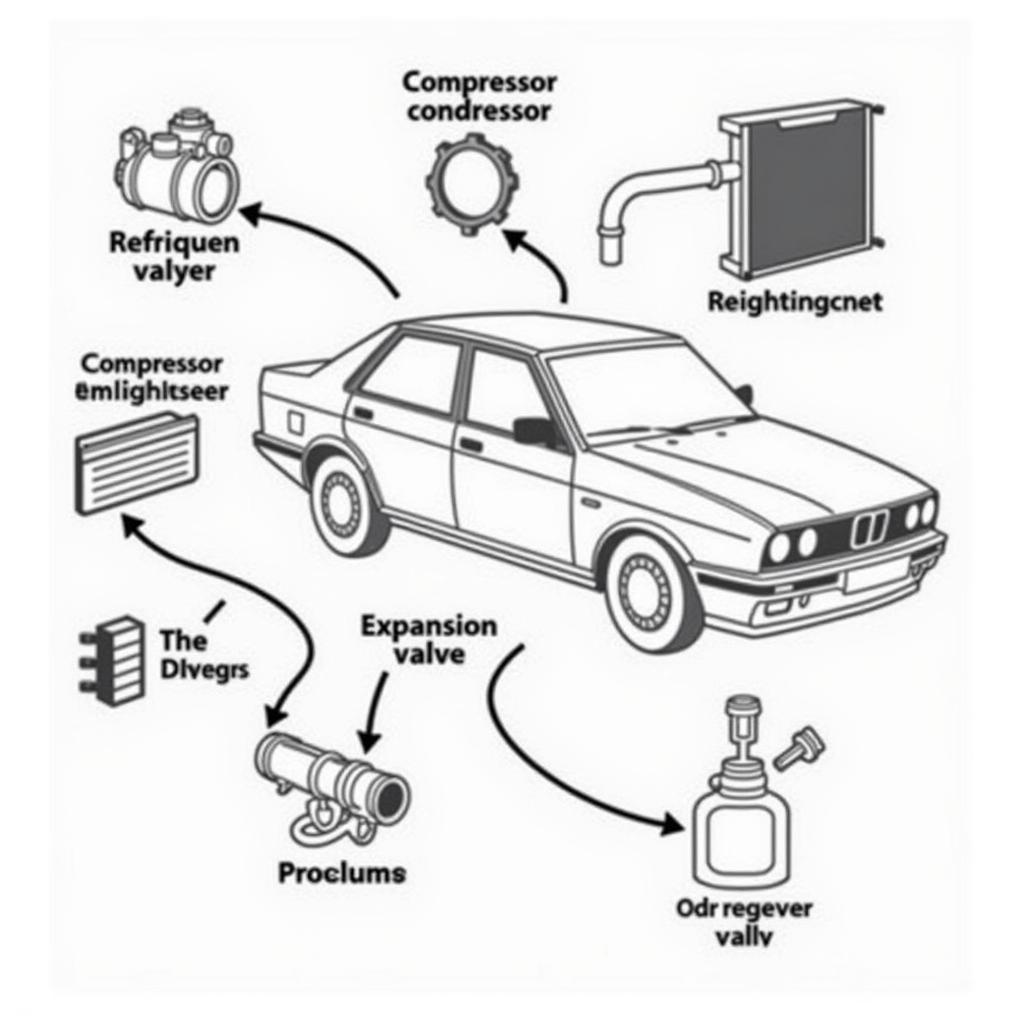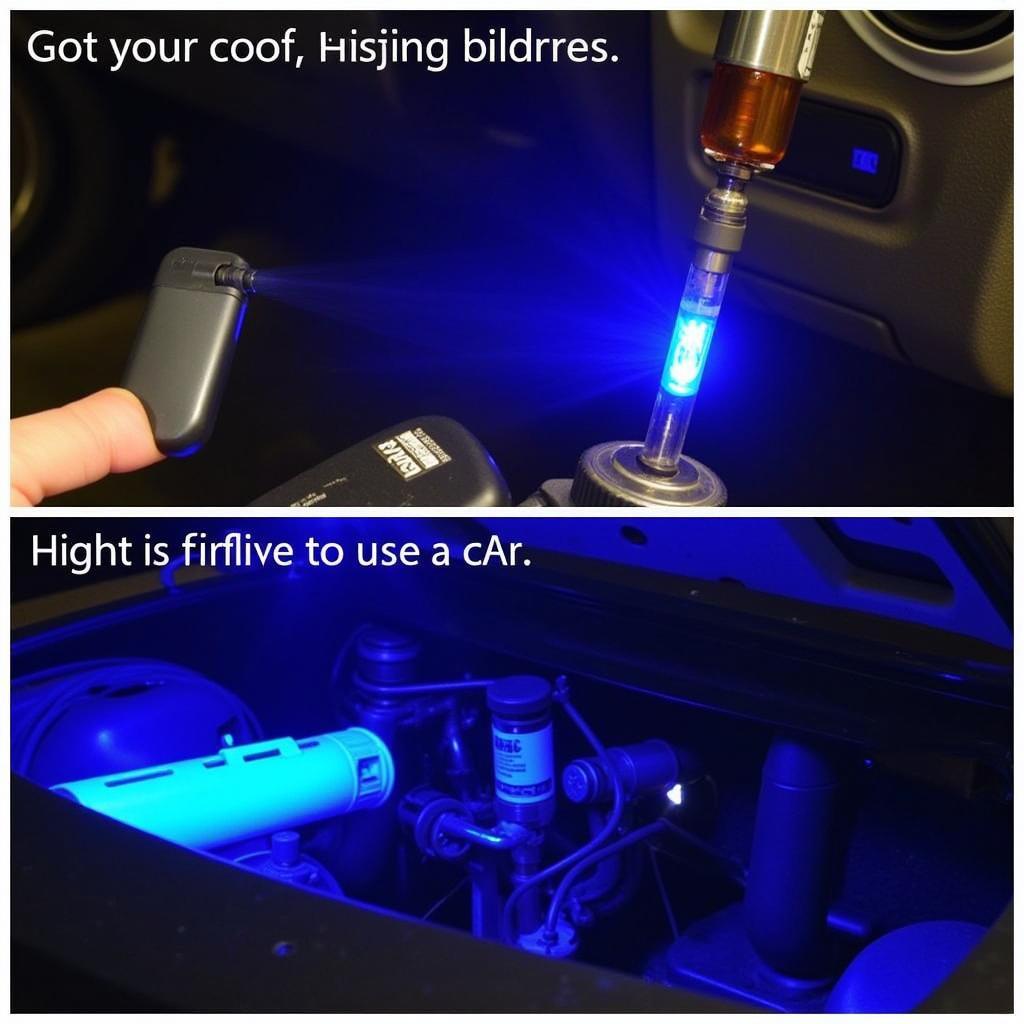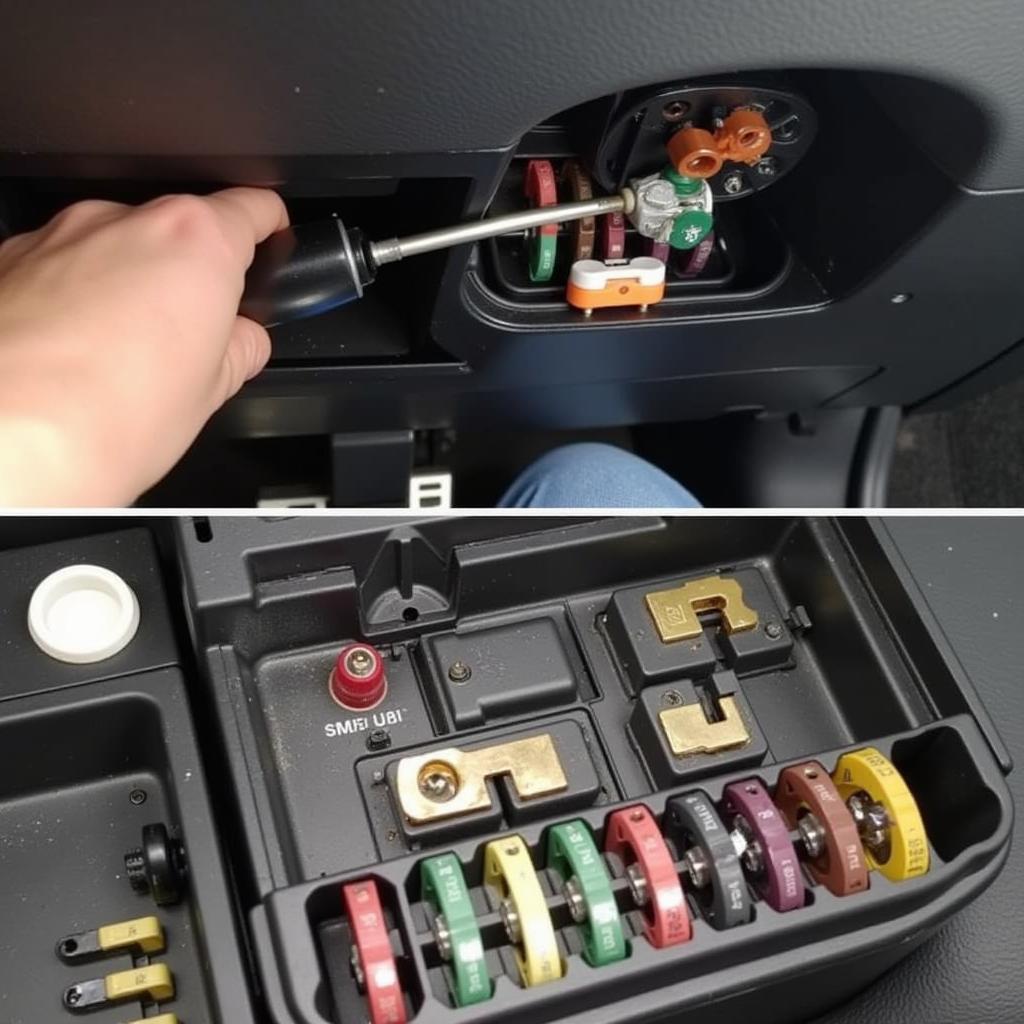Knowing how to fix car AC problems can save you time and money. A malfunctioning AC system can make driving uncomfortable, especially during hot weather. This guide provides a detailed approach to diagnosing and fixing common car AC issues, empowering you to take control and get your cool air back. After reading this comprehensive guide, you’ll be better equipped to troubleshoot and even fix some common AC problems yourself. Check out the average cost to get car ac fixed for a better understanding of potential expenses.
Understanding Your Car’s AC System
Before diving into how to fix car AC, it’s essential to understand the basic components and how they work together. The system consists of a compressor, condenser, evaporator, expansion valve, and refrigerant. The compressor pressurizes the refrigerant, allowing it to circulate throughout the system. The condenser cools the high-pressure refrigerant gas, converting it into a liquid. The expansion valve then lowers the pressure and temperature of the liquid refrigerant before it enters the evaporator. Finally, the evaporator absorbs heat from the cabin air, cooling it down, and the cycle repeats.
 Car AC System Components Diagram
Car AC System Components Diagram
Common Car AC Problems and Solutions
Several issues can cause your car AC to malfunction. Here’s a breakdown of the most common problems and their solutions:
AC Blowing Hot Air
One of the most frequent complaints is the AC blowing hot air instead of cold. This could be due to a low refrigerant level, a faulty compressor, a clogged expansion valve, or a problem with the electrical system.
Low Refrigerant Levels
If your AC isn’t blowing cold air, the first thing to check is the refrigerant level. A leak in the system can cause the refrigerant to deplete, resulting in warm air. You can check the refrigerant level yourself using a gauge or take your car to a mechanic for a professional inspection. Remember, refrigerant is harmful to the environment, so it’s important to find and fix any leaks.
 Refrigerant Leak Detection with UV Dye
Refrigerant Leak Detection with UV Dye
Faulty Compressor
The compressor is the heart of the AC system. If it’s not working correctly, the refrigerant won’t circulate, and the AC won’t blow cold. Testing the compressor requires specialized tools and knowledge, so it’s best to consult a mechanic if you suspect a compressor issue. If you’re curious about the costs involved, take a look at the [average cost of fixing ac in car](https://autotippro.com/average cost of fixing ac in car/).
Clogged Expansion Valve or Evaporator
A clogged expansion valve or evaporator can restrict the refrigerant flow, leading to reduced cooling performance. These components often require professional cleaning or replacement. Need to fix hot air blowing? Check out this guide: fix car air conditioner blowing hot air.
Electrical Issues
Electrical problems, such as a blown fuse, a faulty relay, or a wiring issue, can also prevent the AC from working. Checking the fuses and relays is a simple DIY task, but diagnosing complex electrical problems requires expertise.
Diagnosing the Problem: A Step-by-Step Guide
- Check the fuses and relays: Locate the AC fuse and relay in your car’s fuse box and inspect them for any damage.
- Inspect the compressor: Look for signs of damage or leaks around the compressor.
- Check the refrigerant level: Use a gauge or consult a mechanic to determine the refrigerant level.
- Check for leaks: Look for signs of oil or dye around the AC components.
 Checking Car AC Fuse
Checking Car AC Fuse
“Regular maintenance is key to preventing AC issues. Simple checks like inspecting the belts and hoses can save you from costly repairs down the road,” says John Smith, a certified automotive technician with over 20 years of experience.
DIY vs. Professional Repair: When to Call a Mechanic
While some AC problems can be fixed with basic DIY skills, others require professional expertise. If you’re unsure about the cause of the problem or uncomfortable working with the AC system, it’s always best to consult a qualified mechanic. For an idea of potential repair costs, see this helpful resource on average cost to fix car ac. Another insightful article you might find useful covers the car ac compressor replacement and recharge average cost to fix.
“Don’t underestimate the importance of proper AC maintenance. A small problem, if left unattended, can quickly escalate into a major and expensive repair,” adds Jane Doe, an experienced automotive engineer specializing in climate control systems.
Conclusion
Understanding how to fix car AC issues can empower you to maintain your vehicle’s comfort and avoid costly repairs. By following this guide and knowing when to seek professional help, you can keep your car’s AC running smoothly for years to come. If you need further assistance or expert advice, feel free to contact us at AutoTipPro. Our phone number is +1 (641) 206-8880 and our office is located at 500 N St Mary’s St, San Antonio, TX 78205, United States.





Leave a Reply